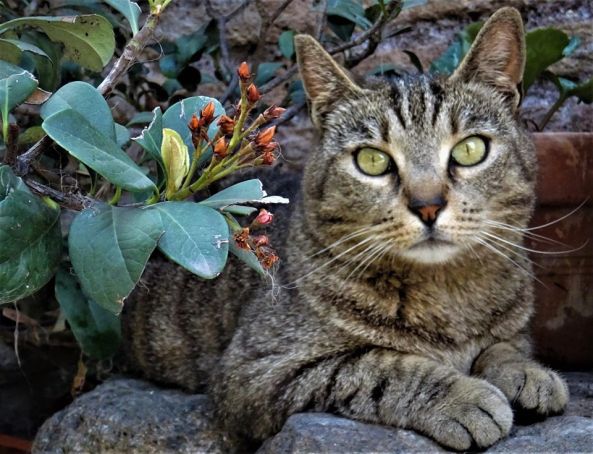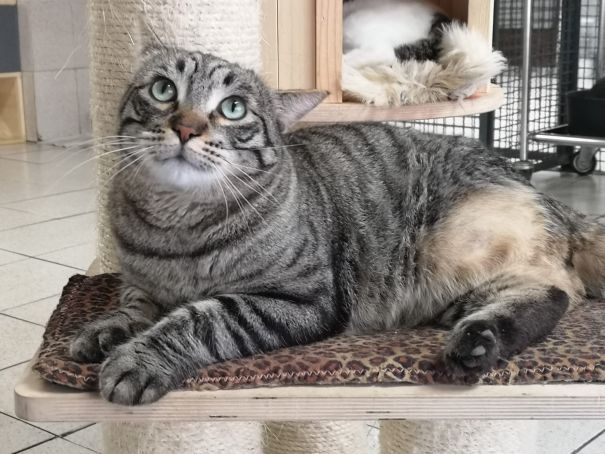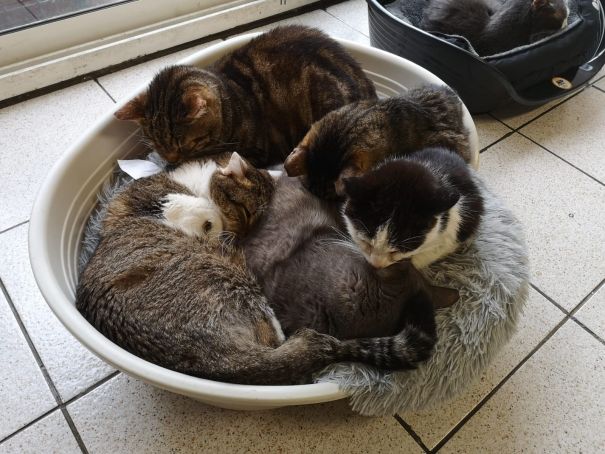Rome cat shelter appeals for donations and distance adoptions.
Rome's Torre Argentina Cat Sanctuary, located among the ruins of the Largo Argentina archaeological area, has provided shelter, food and love to cats in the city centre for three decades.
The volunteer-run shelter receives no state funding and relies solely on donations from the visiting public and whoever supports its distance adoption scheme.
Where is Rome's cat sanctuary?
Reached by a steep set of steps from the Via Arenula corner of Largo di Torre Argentina, the shelter has low ceilings and vibrates every time the number 8 tram passes overhead.
Passersby stop to take photos of the cats lounging in the remains of four temples from the Roman Republic era, as well as part of Pompey's Theatre.

Most famously, the cats' backyard is also the scene of Julius Caesar's assassination in 44 BC. During excavations of the archaeological site in 1929, cats began to make their home among the ruins.
This led to the creation of a colony of stray and abandoned cats cared for by a succession of gattare ('cat ladies') until the establishment of the Torre Argentina Cat Sanctuary in October 1994.
How many cats are at the sanctuary?
The shelter is currently home to around 80 cats, many living free among the ruins and some who are disabled, deaf, blind and have incurable health problems such as kidney failure, and in need of daily medication.
Who founded the cat sanctuary?
The shelter was founded by Lia Dequel who passed away in 2013, and Silvia Viviani, a retired opera singer, in her 80s, who still works at the shelter several days a week.
In addition to providing cats with food, shelter, medicine and love, an important aspect of the volunteers' work is sterilising cats in Rome to keep the feral cat population down.
In 2022 they sterilised 5,211 cats in the city.
Nine Lives
Wanted in Rome recently spent a morning in the shelter's inner sanctum, reached via two locked doors, which houses its most precious and fragile residents.
The walls of this long, bright room are lined with crates, one for each of the cats, all of which are sick or disabled. Many of these animals have in the past met with neglect or injury.
Luckily cats have nine lives however and these felines get to spend the rest of their days surrounded by compassion, in what truly is a sanctuary for them.
Each cat has a name and all have their own personality. Some are meek, others have a mischievous streak. Some wish to be petted, others wish to play. We met some of the shelter's best known characters, and found out a little about them.
Cast of characters
Castellano was in a road accident causing him to lose a leg and remain partially paralysed; Meeru, a blind cat found on the side of the road, unsterilised and crying for help; Debra who has one eye and severe vision-impairment; Zeyu, an abandoned cat with severe viral rhinotracheitis causing fatigue in breathing; and Mozart who was born with a neurological condition knowncerebellar ataxia.

Kittens
While we were there volunteers introduced us to four tiny kittens, believed to be around 20 days old, who were found abandoned on a street in Rome.
These little creatures were about to be taken home by one of the volunteers, where they will be minded until they complete their vaccination cycle and become accustomed to humans, before being put up for adoption.
The shelter is a dangerous place for kittens: there are too many endemic diseases for their immature immune systems.
Volunteers told us that it while it would be relatively easy to find good homes for the cute kittens, it was decidedly more difficult to rehome the old and sick cats who in any case, they say, are better off at the shelter where they are assured expert care and attention.
How can I volunteer at the cat sanctuary?
The shelter is always looking for new cat-loving volunteers, particularly those who speak English given that most of the visitors are foreign tourists.
The volunteers at the shelter are a mix of Italians and foreign residents in Rome.

The cat shelter is technically squatting on the premises, which is owned by the city's cultural superintendency, but volunteers point out that they are not permitted to rent out an historical asset.
In 1993 they occupied the property, described as neglected storehouses, before installing running water, electricity and facilities to house the cats.
Volunteers say the recent works at the archaeological site at Largo Argentina - part of a €1 million development project sponsored by luxury jeweller Bvlgari - did not affect the cats or the work they carry out at the shelter.
The Largo Argentina site is now accessible to the public for the first time, thanks to elevated paths to allow visitors to "walk through history" as well as admire the cats.
How can I support Rome's cat sanctuary?
Cat-lovers can check out the adoption programme on the sanctuary's website where they can find information about how to sponsor a cat.
Online donations can be made through PayPal via the website, while the shelter's friends in the Facebook group Gatti di Roma – Roman Cats also offer their creative works to raise funds.
Those living in Rome can help by making a donation in person or purchasing gifts directly from the shelter, where they can also meet the happy Roman cats who have found their forever home.
By Andy Devane
Where can I find Torre Argentina Cat Sanctuary?
The shelter is located on the corner of Via Arenula and Largo di Torre Argentina, not far from Piazza Venezia in central Rome.
The sanctuary is open every day 12.00-16.30. For details about the shelter, its residents and the work carried out by volunteers, see website.
This article was published in the July-August 2020 online edition of Wanted in Rome magazine and was updated on 8 August 2023.
General Info
View on Map
Rome's cat sanctuary among the ruins
Largo di Torre Argentina angolo, scavi archeologici, Largo Arenula, 00186 Roma RM, Italy




















